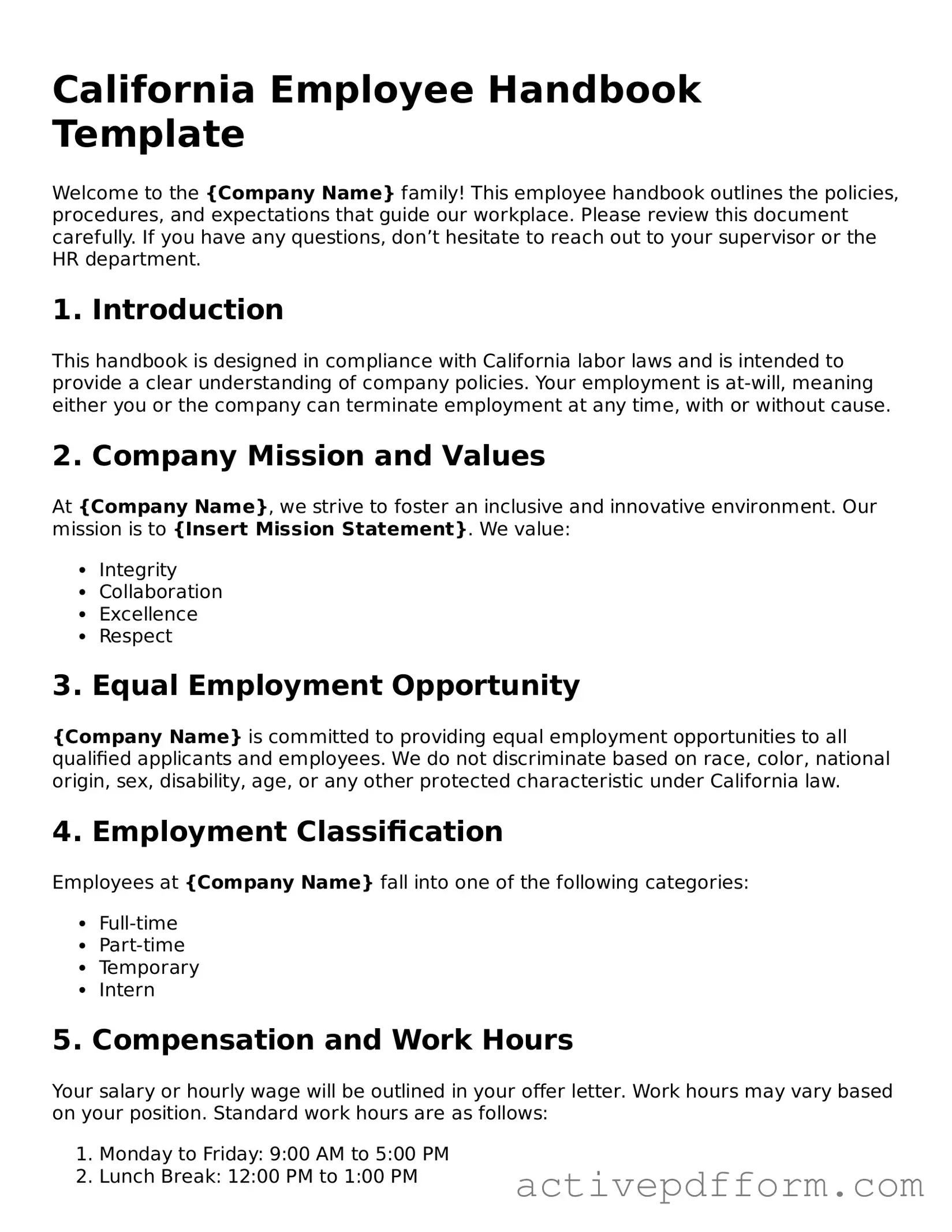California Employee Handbook Template
Welcome to the {Company Name} family! This employee handbook outlines the policies, procedures, and expectations that guide our workplace. Please review this document carefully. If you have any questions, don’t hesitate to reach out to your supervisor or the HR department.
1. Introduction
This handbook is designed in compliance with California labor laws and is intended to provide a clear understanding of company policies. Your employment is at-will, meaning either you or the company can terminate employment at any time, with or without cause.
2. Company Mission and Values
At {Company Name}, we strive to foster an inclusive and innovative environment. Our mission is to {Insert Mission Statement}. We value:
- Integrity
- Collaboration
- Excellence
- Respect
3. Equal Employment Opportunity
{Company Name} is committed to providing equal employment opportunities to all qualified applicants and employees. We do not discriminate based on race, color, national origin, sex, disability, age, or any other protected characteristic under California law.
4. Employment Classification
Employees at {Company Name} fall into one of the following categories:
- Full-time
- Part-time
- Temporary
- Intern
5. Compensation and Work Hours
Your salary or hourly wage will be outlined in your offer letter. Work hours may vary based on your position. Standard work hours are as follows:
- Monday to Friday: 9:00 AM to 5:00 PM
- Lunch Break: 12:00 PM to 1:00 PM
6. Employee Benefits
Eligible employees are entitled to various benefits, including:
- Health Insurance
- Retirement Plan
- Paid Time Off (PTO)
- Family leave
7. Code of Conduct
Every employee is expected to adhere to the following guidelines:
- Respect all colleagues and management
- Maintain confidentiality and privacy
- Avoid conflicts of interest
- Report any inappropriate behavior
8. Workplace Safety
Your safety is a priority at {Company Name}. Follow all safety protocols and report any safety hazards immediately.
9. Progressive Discipline Policy
Disciplinary actions may be taken for violations of company policy. The steps may include:
- Verbal warning
- Written warning
- Final warning
- Termination
10. Acknowledgment of Receipt
By signing this handbook acknowledgment, you confirm that you understand and agree to adhere to the policies and procedures outlined in this document.
__________________________ {Employee Name}
__________________________ {Date}
__________________________ {Manager/Supervisor Name}
__________________________ {Date}
